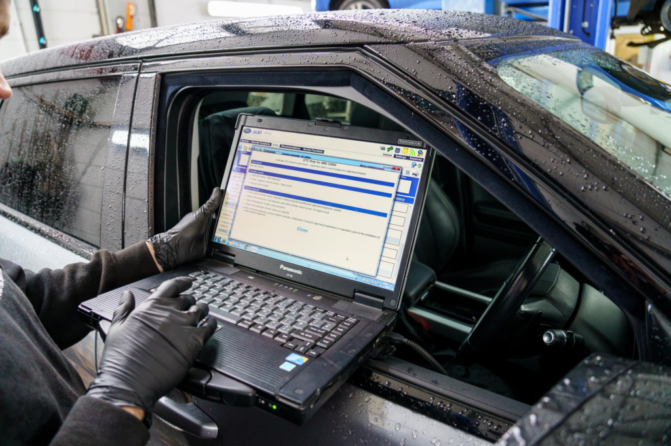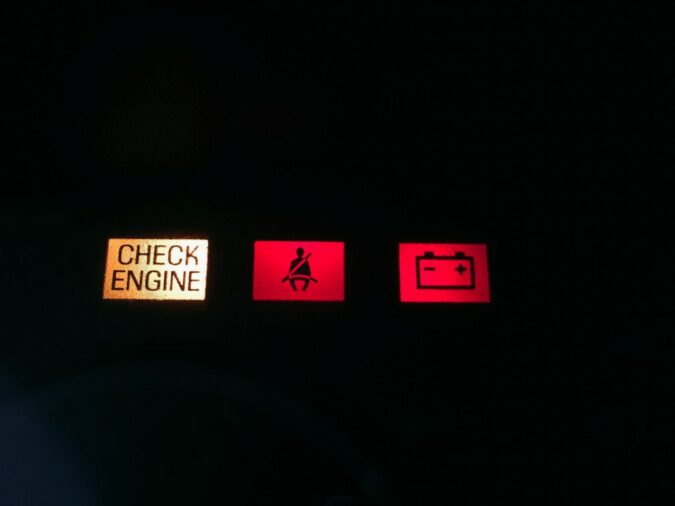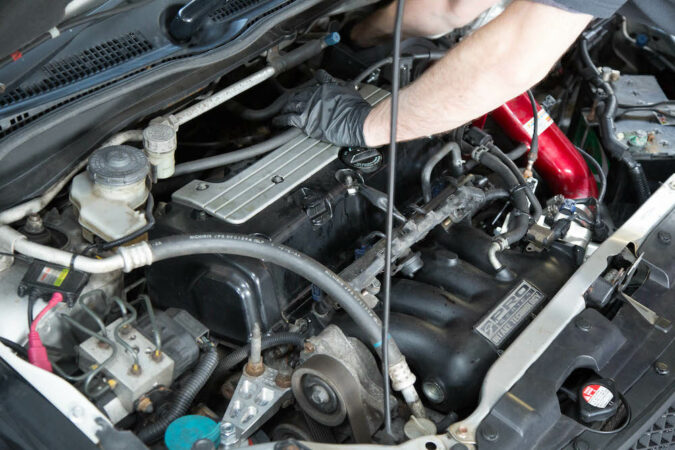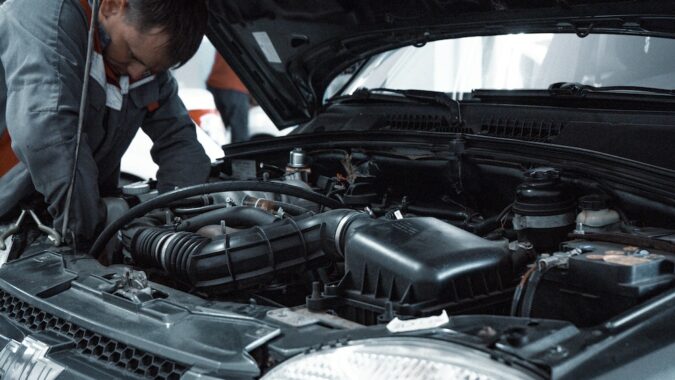Are you experiencing some weird symptoms with your engine and you diagnosed the code P0012? What does this code mean? More on that and how to solve it in this article, where we will elaborate on it in-depth and you don’t want to miss that.
Having a problem like this can be a really frustrating thing to deal with. Mainly because at the beginning you don’t know what is it. The check engine light turns on all of a sudden and you end up panicking what could it be the problem? This situation has happened to all of us, to be honest. So, you shouldn’t worry much about it.
The important thing is that you are aware of it and you are able to diagnose the issue with an OBD2 scanner. Then you go over the possibilities that could cause this problem and frankly, there are more than a few things that could cause this P0012 code to appear. But you shouldn’t worry because we are going to cover all of them in-depth.
First, we will learn more about car diagnostics. Then we will learn the P0012 code meaning and what are the main causes why it appears. Later on, we will discuss the symptoms that are associated with this code, and then we will learn how to diagnose and fix this code.
After we are done with this code, we will cover the P0011 and the P0014 codes, these codes very often happen along the P0012. This is why it is useful to be aware of them as well. So, if you want to learn more, follow along.
P0012 Code
Now before we dive deeper into the P0012 code and its meaning, let’s first introduce ourselves to the topic. I bet that there are not a lot of people out there that are not familiar with car diagnostics and the tools needed for this process to be done the right way.
That’s why we need to create a good intro for beginners who have just started learning things. If you feel that you know more, you can move to the P0012 code meaning. If not, stick with us for a bit.
Nevertheless, car diagnostics is not like back in the day. Back in the day cars were really simple. You just tweaked the carburetor a little bit, small tweaks on the valves, and you are done. Nowadays things are much more complex.
You have variable valve timing, sensors, solenoids, and whatnot. All this makes modern cars better to drive but far more complex to understand and diagnose.
Nowadays having an OBD2 scanner tool is one of the essentials if you want to diagnose a problem that is causing the check engine light or any other light on the dashboard.
In addition to this, you will also need a multimeter to troubleshoot these sensors and other components that you have collected codes on. And for a beginner, this could be really confusing and overwhelming.
But it shouldn’t be this way because everything has its ins and outs. Once it clicks in your head, it is relatively easy to diagnose problems with any car. You just need to learn how to use this scanner and you will benefit in the long run. Now let’s presume that you diagnosed the car and you found the code P0012. What does this code mean? Let’s see up next.
P0012 Camshaft Position Timing Bank 1
Now let’s elaborate more on the P0012 code and its meaning. As you probably know, every DTC trouble code has a definition and the definition for the one that we are talking about is “P0012 Camshaft Position Timing Bank 1”. But what does all this means? Let’s explain.
The long answer to this question is that the ECU has noted that there is a slight difference in the recommended intake camshaft position angle with the actual angle that your camshaft has.
To be more precise, this code appears when the camshaft has remained in a retarded position. Or the camshaft position is above the maximum recommended value. That’s why you get this error. But you are probably still confused, right? You shouldn’t be.
In simple words, this means that the timing of your engine is off or the timing is not measured correctly. And in most cases, the second thing is the problem. But more on that in the following chapter where we will elaborate more on the causes of this issue.
What is important though, is that you have a problem with bank 1. This is the bank where cylinder 1 is located. So, if you have an inline engine you shouldn’t be confused, but if you have a V engine, you should look for cylinder number 1.
Overall, that’s it when it comes to the meaning of this P0012 code. But what might be causing this error code to your car? Well, more on that we are going to cover in the following chapters where we will elaborate on all of the possibilities in great detail. So, follow along.
Causes For The P0012 Code
If you didn’t know, this problem is mostly connected to the variable valve timing mechanism of the engine. This is a specific mechanism that alters the timing of the valve lift event. This system has been used since the 90s and now it is a standard on all cars.
It improves the performance, emissions, and fuel efficiency of the vehicle. But sometimes it can cause problems like this code. But precisely what are the main causes for this code? Let’s elaborate on them.
1. Bad Or Contaminated Solenoid Screen
The VVT solenoid screens are one of the most frequent causes of the problems with the code P0012. So, why is this the case?
Well, this is the case because these screens resemble small filters. When they get clogged up, they will cause problems like in our case.
So, sometimes they need to be removed and cleaned out if you want to resume the proper work of the VVT system. The whole VVT has to be disassembled and refurbished to fix the issue.
2. Bad Camshaft Variable Valve Timing Solenoid
The second most probable cause for the P0012 code is the bad camshaft VVT solenoid. This solenoid is the component that activates the actuator and tells the oil control valve to send oil into the actuator.
These solenoids are electrical components and their circuit can short out or they could completely fail. The only way around will be to replace the solenoid with a new one and call it a day. This way you will be sure that no more issues will follow with the system.
But first, you need to diagnose the component itself and this can be rather complex stuff. VVT is not a simple system and you need a lot of knowledge and skill to understand how it functions before you do a repair like this one. Now let’s move on to the next cause.
3. Bad Variable Valve Timing Actuator
The third most probable cause for the P0012 code is a bad VVT actuator. This is basically a device that works with the oil pressure that is sent from the oil control valve by the orders of the solenoid that we discussed previously.
The actuator is a mechanical device and as with every mechanical device, it can fail and cause issues like this. Especially in this system where the tolerances are almost non-existent. So, this is a thing that you want to look at when trying to fix the P0012 code. Now let’s move on to the next probable cause.
4. Running The Engine On Low Or Incompatible Oil
The next thing that could cause the P0012 code is the situation when you run the engine on low oil or on incompatible oil.
These VVT systems need oil to work. If there is not enough oil in the system, then this system will show the check engine light on the cluster.
In addition to this, you cannot run any type of oil but an oil type that was specified by the manufacturer. Make sure that you stick to the right viscosity for this specific application. Don’t use thinner or thicker oil than the one that is recommended.
5. Worn Out Timing Chain
The next probable cause for the P0012 code that we would like to cover is the situation with the worn-out timing chain.
Modern cars require the replacement of timing chains at the right interval. If you delay this process, there will be the development of some slack in the chain and this will cause the camshaft to lose timing. So, it could throw a code like in this case. This is why you need to replace this timing chain on time.
5. Broken Timing Chain Tensioner
And the last probable cause for the P0012 code that we would like to cover is the problem with the broken timing chain tensioner or guide.
These components are keeping the right tension on the chain itself. So, whenever some of these components fail, there will be a play that will develop and you will start noticing symptoms like this code that we are discussing and the ones that we are going to cover next.
Symptoms Of The P0012 Code
Now as e covered the probable causes for this problem with the P0012 code, we can now focus on the symptoms that are associated with this problem.
As we all know, whenever there is a code, there are symptoms that come along. So, what are these symptoms? Let’s elaborate on them in detail in the following chapters.
1. Check Engine Light
The first and most probable symptom that you are going to notice is the check engine light. Since you are already here, you probably are aware of this symptom.
But it is worth noting that this P0012 code usually does not appear alone. It often is associated with other codes. Namely the P0011 and the P0014 codes that we are going to cover at the end of this article. Now let’s move on to the next symptom.
2. Decreased Fuel Efficiency
The second most common symptom associated with the P0012 code is the decreased fuel efficiency which will be notable whenever you have a problem with the VVT system.
Variable valve timing basically keeps our cars the most efficient that they could get. So, whenever this system is malfunctioning, there could be some loss in the performance of the car as well as decreased fuel economy.
This is why when you notice something like this, it is important to act quickly and diagnose the problem. Don’t just sit and stand there watching this check engine light. Investigate the matter and sort out the issue as soon as possible.
3. Engine Works Strangely
The next symptom that is connected with the P0012 code that we would like to cover is the situation when the engine doesn’t work as it should. It works strangely.
Sometimes it struggles to start properly or suffers from a poor idle. In some more extreme cases, the engine could even stall and have trouble starting.
These symptoms are not only associated with a bad VVT. But if you diagnose the check engine light and the only thing that it shows are VVT codes like the P0012, then this might be the root of the problem in your car. Now let’s cover the last symptom.
4. Rattling Noises
The last symptom associated with the P0012 code that we would like to cover is the situation with the rattling noises coming from the timing cover.
These noises are often attributed to a loose timing chain. This chain is either worn out or the timing tensioner is broken and the chain has a lot of slack in it.
So, when you have a code like this and you are experiencing rattles, there is a high chance that there are problems with the timing chain itself and your problems come from there. But how you can diagnose this problem? Let’s find out in the following chapter.
How To Diagnose & Fix The P0012 Code?
Now let’s see how you can diagnose this P0012 code on your car. And the short answer is that you first need to get an OBD2 scanner and see the codes that you are getting.
Go through all of the codes and focus on the ones that are for the VVT system like the one that we are covering in this article.
The first thing that you want to check and probably the easiest component is the solenoid and the screens of this solenoid.
The screen as we mentioned is the wire mesh that cleans out the oil and makes sure that nothing bad enters the actuator. This component often fails and the VVT develops issues like this. Make sure that you clean them out and everything is nice and clean.
The second thing that you want to check is the solenoid itself. The solenoid is an electrical component that basically runs this system. It tells the actuator when to open and close in order to activate the VVT.
This component needs to be troubleshot and checked if it works. For this, you will need a multimeter tool to check if it’s working or not. You can see how the procedure is done in the video that we attached above.
This sensor is very often located on top of the valve cover or close to the valve cover. For the right placement, you need to look for the right diagram for your engine.
If the solenoid is good, then you can look for your problem elsewhere. And that is in the actuator itself, or the valve body where the solenoid goes. The timing chain and the tensioner are other possibilities to look at in order to fix the P0012 code.
Cost To Fix P0012 Code
So, what is the cost to fix the P0012 code? Well, the answer to this question really depends much on the problem itself.
If the solenoid is the one that is causing the issue then you can expect to pay somewhere in the range of $80 to $250 for the part alone. While the labor is also going to cost you between $100 to $150. Overall, not a crazy expensive amount of money.
The VVT actuator on the other hand is a different story and replacing this component will cost you somewhere in the range of $850. $300 for the part and $550 for the labor involved.
Timing chain replacement is also quite expensive. Depending on if you have a timing belt or chain, costs might vary. But on average it is between $1,000 and $1,500 to replace the chain/belt and the tensioner. But what is worth noting are the other codes that you will get when you have a problem like this. And that we are going to cover next.
Similar Codes To The P0012
Now let’s discuss the other codes that are often occurring when you have a P0012 code.
P0011
The P0011 is another very similar code to the P0012. This code has the same symptoms and causes. But what is different is the definition of this code.
The definition for the P0011 code is “Intake camshaft position timing over advanced bank 1”, or possibly, “Intake camshaft position timing – over-advanced (bank 1)”. Both of these definitions are correct.
But if you are already familiar with the P0012, this code is caused by the same components as the code that we discussed in this article. So, beware of it. Now let’s cover the next code that is interesting to us.
P0014
The next code that we would like to cover is the P0014 code. This code is the same code but for the exhaust camshaft of that bank 1 that we are discussing all the time.
It bears the same causes as well as the symptoms concerning it. But the definition is rather different. Namely the definition for the P0014 code is “Exhaust Camshaft Timing Over Advanced Bank 1” or possibly, “exhaust camshaft position timing”.
This means that the exhaust camshaft position timing is off and the VVT is not working well. For how to sort this problem, check the information that we shared about the P0012 code, both causes, and symptoms.
Facts about P0012 Code and Camshaft Position Timing:
- P0012 is an OBD-II generic code indicating that the engine control module has detected that the intake camshaft timing for bank 1 is more retarded than commanded.
- The over-retarded timing condition could be during the advancing or retarding phase of the camshaft timing.
- The P0012 code can be caused by the VCT oil control valve stuck in the open position, camshaft phaser damage, or oil flow problems to the VCT piston and phaser.
- Symptoms of the P0012 code include hard starting, decreased fuel mileage, engine stalling, hesitation, rough running, and failure in an emissions test.
- To diagnose the P0012 code, a mechanic will visually check electrical connections, scan and document codes, reset the codes, and command the oil control solenoid valve on and off.
- Follow the manufacturer’s recommended pinpoint test to narrow down the problem, since each engine may be tested differently.
- Common mistakes when diagnosing the P0012 code include not verifying the failure, not doing a thorough visual check, not following the pinpoint test, and replacing parts unnecessarily.
- Prolonged driving with the camshafts not retarding may cause other problems to the valve train or engine, depending on the cause of the failure.
- Repairs to fix the P0012 code include resetting the fault codes and performing a road test, changing the oil and filter, repairing or replacing the wiring or connection to the camshaft oil control solenoid, and replacing the camshaft oil control valve for bank 1 intake camshaft.
- The camshaft phaser controls the timing advance and retard function through oil pressure and oil, and the oil needs to be the proper viscosity for the camshaft timing control to work as designed.
Conclusion
In this article, we have covered the problem with the P0012 code. We learned the basics of this problem and its definition. We learned that this is a VVT issue that is affecting cars with variable valve timing.
Then we have covered the main causes of this problem as well as the symptoms that are closely associated with this issue. After we learned how to diagnose the problem and lastly we discussed two similar codes that have somewhat the same diagnosis and often appear with the code that was the main focus of this article.
F.A.Q
Now let’s answer some frequently asked questions.
What Does Code P0012 Mean
This code means that there is a slight irregularity on the intake camshaft on bank 1 of your engine. More precisely the angle of the camshaft that is detected does not match the desired angle that the ECU wants. This means that the camshaft is still in retarded position.
What Causes A P0012 Code
This code is very often caused by clogged screens of the VVT system as well as a bad VVT solenoid or a bad VVT actuator. These are the most common causes. Also, a bad timing belt or timing chain and their respective tensioners can cause this issue as well.
How Do I Fix Code P0012
Fixing the problem with this code really depends much on what is causing the code. In most cases, this code is caused by the solenoid. Or the screens that are mesh-like components that are there to clean the oil that goes into the actuator. There you should focus on first.
P0012 Ford F150
The P0012 on the F150 is very often caused by the solenoid of the variable valve timing. The solution in most cases is to replace this component with a new one. But still, you need to test and make sure that indeed this component is causing all this trouble to your truck. Sometimes it is the oil or the actuator itself. That’s why you need to do a good diagnosis before jumping to conclusions.




